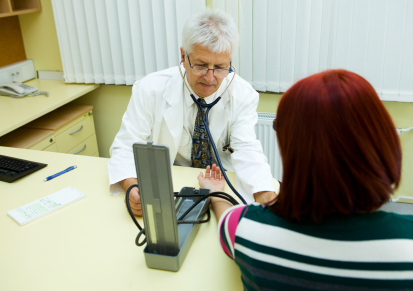My post on blood pressure testing is about visual feedback, so before I uploaded it I tried to find a picture to illustrate what I was saying.
I wanted a photo of the back of a blood-pressure monitor, i.e. what the patient sees while the doctor is reading the numbers off the display. I searched for this on istockphoto (a very popular stock photo site) and the results were very interesting.
What did I get? Shots of attractive people taking their own blood pressure and looking thoughtful; shots of people looking at the display as a kindly doctor takes their blood pressure; sexy nurses; pictures of the monitoring equipment on its own; helpful nurses pointing out the screen to patients.
I had to comb through pages and pages of pictures before I found one that reflected my own experience of having my blood pressure taken by a doctor but being unable to see the screen myself.
In the first photo I found, the patient was a child. Fair enough, maybe there’s no point showing her the display if she’s too young to understand – though really, kids are brighter than you think.
In the second picture I found, the person getting their blood pressure taken was a “beautiful young patient”, according to the caption. I’m not sure what that signifies. Does she not get to see the screen because she’s there to be looked at, not to look? I think my Feminism 101 coursework is in the attic somewhere. Or maybe it's just that the back of her head truly is so beautiful that only a fool would say otherwise.
Anyway, my point is that if stock photography on a given topic is any indication of how we as a culture see that topic, our mental image of blood pressure tests doesn’t reflect reality. You have to look hard to find a picture where the person being tested is not in control, not doing the test themselves or looking at the figures with a friendly professional’s help. To be fair, there were a few where the patient was looking trustingly at the medical professional, or winningly straight at the camera, rather than reading the figures off the monitor. But there were hardly any from the perspective of a patient who's facing the doctor but can't see the monitor display because it's angled away from them, even though that's the reality for most of us.
Yes, stock photos usually put a rosy tint on reality. But in this instance, the desirable situation they portray also happens to be instantly achievable. It just hasn’t occurred to most doctors yet.

